
Black Sea Surfer
Andro Wekua

Andro Wekua, Black Sea Surfer, 2004
installation in 7 parts with 3 collages, colour pencil, pencil and felt pen on paper. 4 fabrics(velours)
Overall 3.5 x 8m

Black Sea Surfer
Andro Wekua
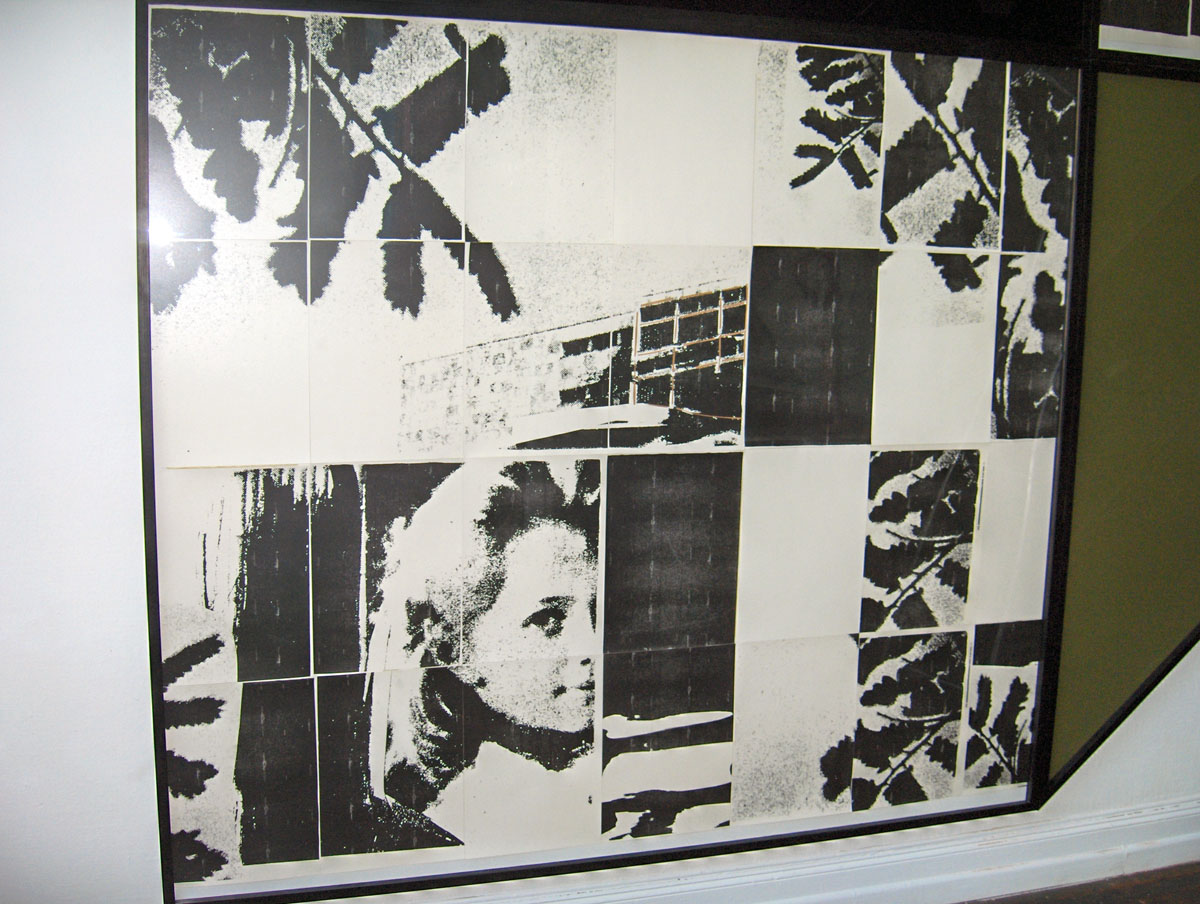
Andro Wekua, Black Sea Surfer, 2004
installation in 7 parts with 3 collages, colour pencil, pencil and felt pen on paper. 4 fabrics(velours)
Overall 3.5 x 8m
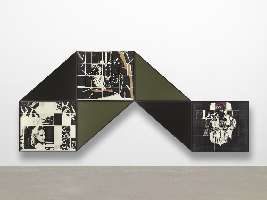
Black Sea Surfer
Andro Wekua

Andro Wekua, Black Sea Surfer, 2004
installation in 7 parts with 3 collages, colour pencil, pencil and felt pen on paper. 4 fabrics(velours)
Overall 3.5 x 8m

Black Sea Surfer
Andro Wekua

Andro Wekua, Black Sea Surfer, 2004
installation in 7 parts with 3 collages, colour pencil, pencil and felt pen on paper. 4 fabrics(velours)
Overall 3.5 x 8m
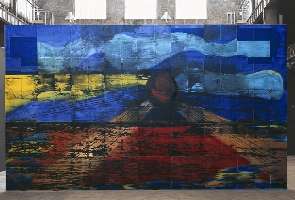
Sunset
Andro Wekua

Andro Wekua, Sunset, 2008
Installation consisting of 170 glazed ceramic panels settled on 20 metal frames, steel scaffolding
500 x 800 x 82 cm
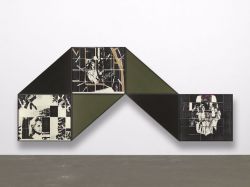
Black Sea Surfer
Andro Wekua

Andro Wekua, Black Sea Surfer, 2004
installation in 7 parts with 3 collages, colour pencil, pencil and felt pen on paper. 4 fabrics(velours)
175 x 200 x 265 (Overall 3.5 x 8m)
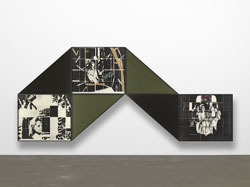
Black Sea Surfer
Andro Wekua

Andro Wekua, Black Sea Surfer, 2004
installation in 7 parts with 3 collages, colour pencil, pencil and felt pen on paper. 4 fabrics(velours)
175 x 200 x 265 (Overall 3.5 x 8m)
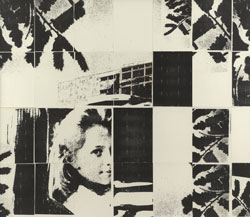
Black Sea Surfer
Andro Wekua

Andro Wekua, Black Sea Surfer, 2004
installation in 7 parts with 3 collages, colour pencil, pencil and felt pen on paper. 4 fabrics(velours)
175 x 200 x 265 (Overall 3.5 x 8m)
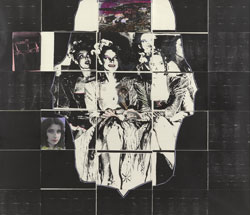
Black Sea Surfer
Andro Wekua

Andro Wekua, Black Sea Surfer, 2004
installation in 7 parts with 3 collages, colour pencil, pencil and felt pen on paper. 4 fabrics(velours)
175 x 200 x 265 (Overall 3.5 x 8m)
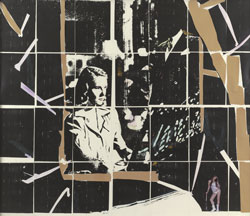
Black Sea Surfer
Andro Wekua

Andro Wekua, Black Sea Surfer, 2004
installation in 7 parts with 3 collages, colour pencil, pencil and felt pen on paper. 4 fabrics(velours)
175 x 200 x 265 (Overall 3.5 x 8m)
Although Wekua uses representational elements in most of his works, his visual symbolism is often perplexing and self-contained. His practice develops elements inspired by both contemporary culture and by his background – he is originally from Soviet Georgia but left at the age of 15 and has since then been living in Germany and Switzerland. All that remains of his past are ruins, strangely juxtaposed with his present-day perspective.
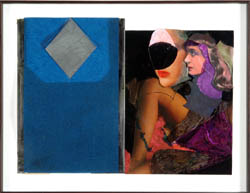
Covered
Andro Wekua

Andro Wekua, Covered, 2006
Collage, silver foil, tissue paper, colour pencil and felt pen on illustration
36.6 x 48.2cm
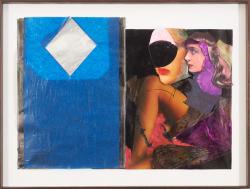
Covered
Andro Wekua

Andro Wekua, Covered, 2006
Collage, silver foil, tissue paper, colour pencil and felt pen on illustration
36.6 x 48.2cm
Andro Wekua’s photographs and painted sculptural installations channel fragments from his own memories of childhood into mosaic-like narratives, conveying a very real but always remote sense of place. In his work, which often features an element of tiled form, it is as if broken images are being put back together, like a seductive but ultimately unsolvable puzzle.
Sunset (2008), an eight-metre wide installation composed of 170 glazed ceramic panels supported by metal scaffolding, is an abstract composition which is also reminiscent of a landscape with softly billowing clouds and a central red and black circle representing the sun falling over a darkening ground.

Sunset
Andro Wekua
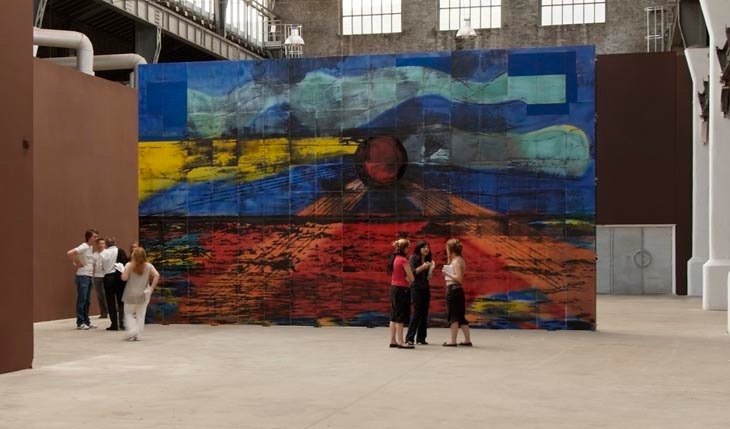
Andro Wekua, Sunset, 2008
Installation of 170 glazed ceramic panels, metal framework, steel scaffolding
500 x 800 x 82 cm
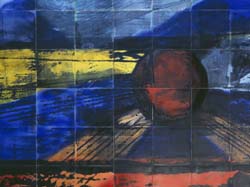
Sunset
Andro Wekua

Andro Wekua, Sunset, 2008
Installation of 170 glazed ceramic panels, metal framework, steel scaffolding
500 x 800 x 82 cm
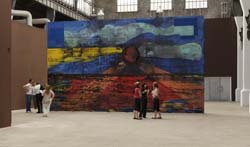
Sunset
Andro Wekua

Andro Wekua, Sunset, 2008
Installation of 170 glazed ceramic panels, metal framework, steel scaffolding
500 x 800 x 82 cm
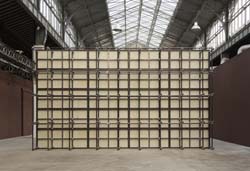
Sunset
Andro Wekua

Andro Wekua, Sunset, 2008
Installation of 170 glazed ceramic panels, metal framework, steel scaffolding
500 x 800 x 82 cm

Sunset
Andro Wekua
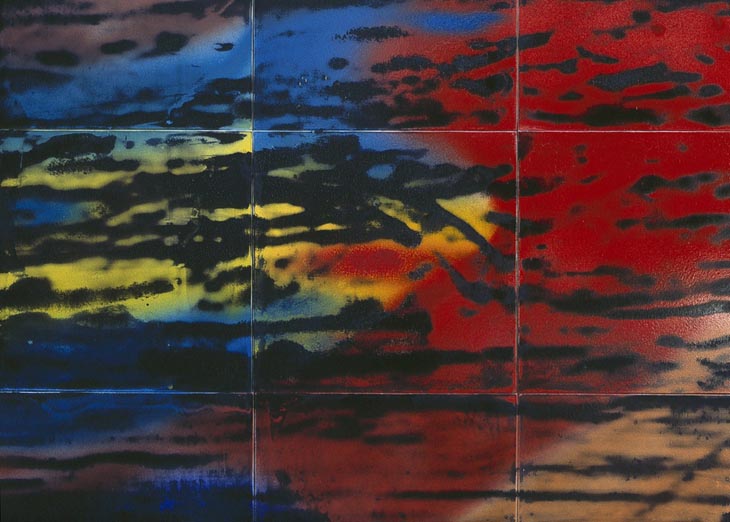
Andro Wekua, Sunset, 2008
Installation of 170 glazed ceramic panels, metal framework, steel scaffolding
500 x 800 x 82 cm
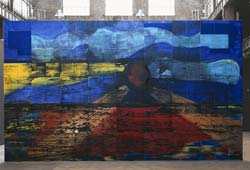
Sunset
Andro Wekua

Andro Wekua, Sunset, 2008
Installation of 170 glazed ceramic panels, metal framework, steel scaffolding
500 x 800 x 82 cm
Primary colours dominate the work, whose painted areas are suggestive of strong but incomplete recollections typical of a dream or a long-ago experience, the details of which have become hazy over time. The scale of the work and its fired tile composition make it appear like an ominous public pool mural from the Soviet era, or a larger-than-life backdrop from a Ballets Russes production.
Aspects of his pieces have a decidedly East European flavour. His use of geometry and his photographic montages, such as Black Sea Surfer (2004) and Covered (2006), seem to come from the visual culture of Communism, but they also feel completely embedded within a more universal underground cinema aesthetic.
































